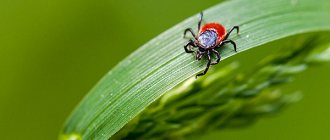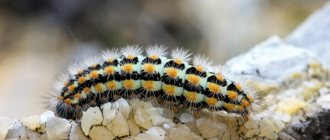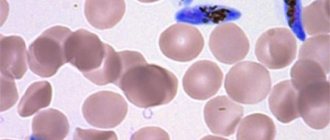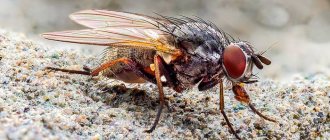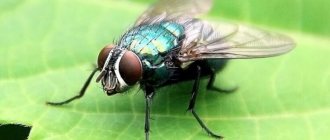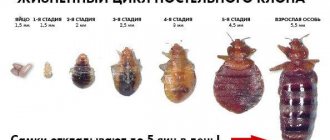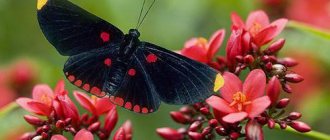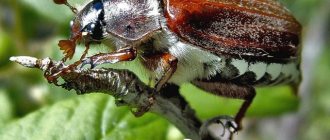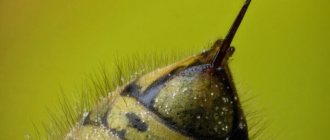Intrusive, annoying, disgusting - these are just a few of the epithets we give to flies. Their reproduction is so fast that it terrifies us. There are millions of different microbes on the body of flies. And yet these insects are not only a symbol of unsanitary conditions and dirt. They are an important link in food chains and destroy organic waste. We will talk about the importance of flies in nature and our lives, about the life cycle and stages of reproduction of flies and their contribution to the development of scientific thought - we will talk about all this in the article.
Flies are different
When we talk about flies, we mean representatives of the order Diptera, class Insecta, of which there are about 75 thousand species. Some varieties are harmless, others sting and bite. There are flies whose reproduction goes through several stages, and there are also viviparous ones.
They live all over the globe. But with all their diversity, in this article we will talk about synanthropic species of flies - those that live in close proximity to us. We know them well, these are:
- House fly (Musca domestica).
- Blue (Calliphora vicina) and green (Lucilia sericata) blowflies.
- Fruit fly or fruit fly (Drosophila melanogaster).
In addition to these most famous representatives, 5 more species of burner flies, representatives of the family Hippoboscidae, live in Russia. In appearance they are similar to house flies, but the difference is that live flies (autumn, horse, sheep) are active bloodsuckers. They are the ones who sting people and animals in late summer and autumn.
And yet most flies feed on any organic matter. But they prefer sweets more. Moreover, they can distinguish sugar from saccharin unmistakably. Although there are specialized types. For example, the larvae of cheese flies (Piophila casei) feed exclusively on cheese.
Lifespan
In its development, the insect goes through 3 stages lasting from 8 to 20 days. The life cycle of house flies is defined as 2-4 weeks, but there are individuals that live much longer.
The lifespan of insects is affected by their habitat. For normal existence of the insect, a temperature range of 20-25 is indicated. Having survived the winter period in a room with low temperatures, the fly thereby increases its life cycle. Fertilized female flies, pupae and larvae endure the cold period of the year in a sleepy state without displaying any activity. With the arrival of spring, when the air temperature reaches at least 10, the flies awaken.
A few words about the “sacred cow” of geneticists
Small fruit flies, which invariably appear on rotten fruit, have made a huge contribution to the development of genetics - the science of the laws of inheritance and variability. It was Drosophila that was chosen as an object for research by the great geneticist Thomas Hunt Morgan (1866-1945). The rapid reproduction of fruit flies, large 4 chromosomes and pronounced sexual dimorphism have made these insects a favorite subject of experiments.
Everyone who studied well at school knows about his laws of sex-linked inheritance of traits and the phenomenon of crossing over.
Nicknamed the “Lord of the Flies,” Thomas Morgan went down in history as one of the founders of practical genetics. And when you get rid of these insects, remember that it is to them that we owe medical genetic counseling, genetic engineering and many other achievements of modern practical geneticists.
Prevention
Insects harm gardens, vegetable gardens, and park areas; young cuttings, leaves, and shoots, which people lovingly grow, especially suffer from the larvae.
In addition, flies are carriers of dangerous diseases. Breeding these insects is not worthwhile, so you need to follow simple rules:
- carry out regular cleaning;
- Take out the trash can every day, which must always be closed;
- do not leave food waste on the table;
- seal fruits, vegetables, meat, fish or put them in the refrigerator;
- monitor the condition of mosquito nets.
Knowing the patterns and characteristics of the reproduction of flies, you can choose effective means of combating them.
General biological characteristics
Despite the diversity of species of these insects, they have similar structural features, life activity and reproduction. The house fly is an excellent representative, using the example of which we will consider the features of the biology of real flies.
The massive body, covered with a chitinous covering, is divided into a head, chest and abdomen. On the head there are three simple and two complex compound eyes, a pair of antennae (antennae) and an oral apparatus (proboscis ending in a labella pad).
On the fly's chest there are two true wings and two halteres (reduced wings) and 3 pairs of jointed limbs. The paws are covered with small sensitive hairs, and end with a sole with suction cups - this is what allows them to “walk” on the ceiling. The fly's two wings allow it to reach flight speeds of up to 20 km/h.
On the oval-shaped abdomen, on the last segments, are the copulatory organs of the male and the ovipositor of the female.
The entire body is covered with hairs, and on the sides of each segment there are spiracles - the openings of the trachea, which allow the insect to breathe. Body hairs and special cone receptors provide the fly with precise coordination.
Gadflies
In nature, there are 30 genera, including 176 species. They are often confused with horseflies, bumblebees and bees.
Appearance
Body length is 9 mm-2.5 cm. An adult has a wide head with large eyes and short antennae. There is no proboscis, or it is reduced. The legs are massive and short. The abdomen is round or conical. The entire body is covered with coarse hairs. The life of gadflies is short - approximately 22 days.
Classification
- Hypodermatinae (Subcutaneous). Adults lay eggs on the hair of domestic animals: horses, rams, cows. The hatched larvae penetrate the skin and move through the tissues. Before entering stage II, they gather under the skin, forming inflamed fistulas. Through them the larvae get to the surface.
- Gasterophilinae (Stomach). There are 2 ways for larvae to enter. Some females lay eggs on leaf food, and they enter the animal with food. Others - on the head and chest. The cattle, by biting and licking the skin, transfer the eggs into the digestive tract.
- Oestrinae (Cavity, nasopharyngeal). Females release eggs in flight, which land on the mucous membranes of the eyes and nose. People often suffer unwittingly: as a result, conjunctivitis (very dangerous for a child) and other diseases can develop.
Some scientists classify Cuterebrinae, the American subcutaneous gadfly, as a separate subfamily. They most often parasitize mice, hares, gophers, etc.
Danger to humans
Some subcutaneous species, such as Dermatobia hominis, attack humans. Bodfly larvae penetrate the skin, causing a lot of suffering. Cases have been recorded where a person died from the penetration of parasites.
Gadflies are inventive in attack: some distract, others attack. Their legs are soft, so you may not notice when a fly lands on your skin. But its bite is very painful, burning. Redness appears in this place and itching begins.
Human blood serves as a breeding ground for eggs. The hatched larvae, looking for a way out, move upward. If they get into the brain, death is inevitable.
Life cycle and features
Flies are insects with complete metamorphosis. This means that the reproduction and development of a fly goes through several stages, namely egg, larva, pupa, and adult. All stages of the life cycle differ in habitat, feeding method and morphology.
Reproduction of flies (meat flies, house flies and others) begins from the moment of mating of individuals at the adult stage. Males attract females using sound signals they make with their halteres. Fertilization occurs inside the female's body.
On average, after 2 days the female lays up to 200 eggs and is again ready to mate. If all the eggs of one fly survived, then during her entire life, which lasts up to 2 months, the female would give birth to 3 thousand offspring. This is 8-9 generations, which would increase the number of descendants of the first fly to 5 trillion individuals. This is the amazing rate of reproduction of flies.
The full cycle of transformations from egg to adult in flies takes 10-20 days and depends on temperature.
Reproduction
It's time to answer the question of how flies appear in our house. Adults of this insect live extremely short lives, and the essence of their existence is to fulfill their reproductive duty to their species.
The larvae of this pest need a moist and nutritious environment for development, therefore, after mating, the female fly begins to search for the most favorable location for her future offspring.
Most often, a compost pit in the garden or a large manure heap acts as such an incubator for laid eggs, and then for voracious larvae.
Having found a suitable place for laying, the female produces up to 120 eggs in one sitting.
We know what happens next from previous chapters about the stages of life and development of these insects.
Stages of development: brief description
For a general understanding of the development, reproduction of flies and ways to combat them, it is important to know the conditions of development of all stages.
The first stage of fly development is the egg. This is the shortest period of the life cycle (up to 24 hours), but also the most important. Flies make clutches in our waste, corpses, garbage pits, and rotten food.
A larva emerges from the egg, which looks like a thin white thread. The larva actively feeds for 5-7 days, increasing its weight 800 times. Then it acquires a brown color, and the fly moves to the next stage of its development.
The pupa is a passive stage of the life cycle that lasts up to 5 days. At this time, a significant metamorphosis (transformation) occurs inside the pupa - a young imago is formed from a shapeless larva.
How does the larva develop?
The embryo is freed from the shell, and a white legless larva appears, which many mistakenly call a worm or caterpillar. Length - about 13 millimeters, pointed in front, truncated in back.
The formation of the larva takes place in 3 stages. On the third, the yellowish-white body becomes shiny and spines appear on it.
Maggots feed on the environment where the eggs were laid. They do not have a digestive system, so they absorb processed food after releasing a caustic substance.
The cycle is completed in 3-25 days, for some, for example, the humpback, up to 4 weeks. The maggot finds a cool place where metamorphosis begins - the pupa is born.
Meaning in nature
Flies become carriers of diseases unwillingly. And in nature their significance is enormous. Starting with the fact that these insects and their larvae are an important link in the food chain.
In addition, without flies our planet would be covered with a layer of rotting organic matter. By repeatedly passing organic waste through themselves, fly larvae return minerals and chemical elements to the cycle of substances in nature.
Many representatives of these dipterans are plant pollinators. And some (for example, blackbirds of the Asilidae family) are active predators that regulate the number of other insects. And, by the way, they are used as biological weapons against pests of forests and fields.
Laying eggs
The described species of flies begins its reproduction process by laying eggs. Egg laying can occur:
- In a pile of pig, horse or poultry manure;
- They fell on rotting wounds;
- In spoiled meat components;
- In rotten vegetables or fruits;
- In garbage and rubbish.
To find the place where eggs are laid, the female uses the olfactory organs located on the antennae. But often the sense of smell alone is not enough in this matter, which is why the female, before laying eggs, uses her proboscis, using it to “taste” the substrate, so to speak. And if the substrate is not suitable, the female fly begins to search for a new place to lay her own eggs.
A housefly can lay up to 150 eggs at a time. The cycle of development and transformation of an insect from an egg into a fly takes about two weeks. Each egg is no more than 1.2 mm in size. As the embryos develop, they absorb the yolk and grow slowly. After a day, the fly eggs transform into thin and white legless larvae. The described stage of development of flies is called “nutritional”.
Dangerous disease carriers
Flies are carriers of pathogens of human infectious diseases. On the surface of their body there are up to 6 million, and in the intestines up to 28 million microbes that can retain their pathogenic properties. Anthrax, typhoid fever, dysentery, cholera, tuberculosis, diphtheria - this is just a small list of what flies carry.
Insects can carry parasitic protozoa, fungal spores, helminth eggs and even mites. Zhigalki carry 6 types of trypanosomes (the causative agents of trypanosomiasis, sleeping sickness) and 3 types of spirochetes (the causative agents of syphilis, Lyme disease). They spoil food, making it completely unfit for consumption, and simply look unaesthetic in borscht. So always separate the flies from the cutlets - it's good for your health!
Viviparous species
These representatives are characterized by rather low “productivity” due to the greater protection of the larvae. The Wohlfarth fly is a viviparous species found in Europe. In Africa, this species is the tsetse.
The developmental stage from egg to larva takes place latently in the abdomen of the female. Flies lay larvae that are ready for independent life. In tsetse they immediately burrow into the soil and pupate. In Wohlfarthova, the maggot parasitizes living organisms. Once on the body of an animal or person, the larva bites into soft tissue. It spends all three larval phases under the skin of the host. To pupate, it climbs out and buries itself in the ground.
And some people breed flies
Fly larvae are a source of excellent feed protein that can compete with bone meal. And there are already examples of the development of such a business on insects in Russia. In 2016, such a mini-farm was presented at the VDNH exhibition. The author of the development is Igor Istomin, head.
The project of his farm for breeding fly larvae and producing from them environmentally friendly and highly effective biofeeds and organic fertilizers is based on the use of what nature has already created over millions of years. The chitinous bristles of flies contain a disinfecting secretion, and the larvae contain pure protein and immunomodulators.
“Fly Farm” is an example of waste-free and environmentally friendly production at an agricultural enterprise, when all waste is recycled and returned in the form of bioadditives for animal feed and organic fertilizers.
Types of insects (name, distinctive features, habitat)
About 4 thousand species of flies are known. The species living in tropical countries have the most striking and original appearance. Fighter flies, which live in South America, are considered the largest. Ktyr is another large representative of the detachment. Ktyr is a predator, destroys pests and is safe for people.
The most common and familiar species of flies live in human homes, on household plots and pastures. Below are photos with names where you can see what the most famous representatives of various families look like. Their description and characteristic features are indicated in the table:
| Family | Main representatives | Characteristics | Distribution in nature |
| True flies (Muscidae) | Room | It can lay larvae at any time of the year if protein food is available. Under unfavorable conditions it goes into hibernation. | Lives everywhere. |
| Bazarnaya | A prerequisite for reproduction is the presence of human feces on the ground. They can attack people because they feed on mucous secretions; they also eat meat, dairy products, and fruit juices. | The habitat includes Central Asia, Transcaucasia, Kazakhstan, and Russia. | |
| Autumn burner | Lives in settlements where there are livestock. It feeds on the blood of animals and sometimes bites humans. | It is not found only in the Far North. | |
| Cheese (Piophilidae) | Cheese | The larvae develop on old cheese, smoked meat, lard, and salted fish. | Most of the individuals live in the northern hemisphere, some live only in South and Central America, and some members of the family are found everywhere. |
| Gray meatfishes (Sarcophagidae) | Wolfartova | The larvae are deposited in animal wounds, causing the development of myiases. They breed on cattle. Worms eat living tissue and eat away parts of muscles. | They live in Southern Europe, the southeastern part of Russia, the countries of the Middle East, China and North Africa. |
| Drosophila (Drosophilidae) | Fruit flies | Flies feed on plant juices, rotting vegetables, fruits, and mushrooms. | They live everywhere. |
| Blue, green meat (Calliphoridae) | Blue meat | They lay eggs in toilets that are not equipped with sewer drains, where a large amount of human excrement accumulates. | It is found in the northern and central regions of Russia, in North America and Europe. |
| Common green carrion | They live in slaughterhouses, cesspools, and garbage dumps. Used in forensic medicine to determine time of death. | Distributed throughout the world. | |
| Bloodsuckers (Hippoboscidae) | Horse, deer, dog bloodsucker. | Females do not lay eggs; they give birth to larvae ready to pupate. Adults parasitize animals and birds. | They live everywhere. |
Feeding maggots
Eggs and larvae of flies Synanthropic insects feed on decaying organic matter and sour juices.
Their food source is human food, crumbs, garbage in a trash can, feces, rotting vegetables, fruits, and plants. The same food is necessary for the larvae. Blowflies develop on dead, rotting tissues of animals and humans, as well as in feces, manure, pus, and garbage cans. The larvae help the corpses decompose, thereby bringing extreme benefits. At the last stage of their development, they burrow into the soil and pupate.
Fly larvae do not have a digestive system; they absorb already digested food. To do this, they initially release a caustic, aggressive chemical that dissolves any organic tissue, after which the prepared food is absorbed.
Interesting!
Maggots live in an extremely dangerous environment, which is teeming with pathogens. They themselves do not get sick, they produce the strongest antibiotic - seraticin, to which pathogens are not able to develop immunity. The larvae stop the rotting of tissues, so they are used in medicine to treat poorly healing wounds. Maggots are specially raised under sterile conditions.
Methods of controlling pest numbers
Flies are carriers of gastrointestinal diseases. Therefore, the appearance of such neighbors in the house is extremely undesirable. Read about how to make fly traps here.
In order to protect yourself and your home as much as possible from these insects, you need to follow simple rules:
- get rid of garbage in a timely manner, especially organic waste;
- to prevent insects from entering, use mosquito nets on windows;
- keep your home clean;
- use chemical means for destruction;
- residents of private houses, farmers, keep the premises for animals clean, inspect them for open wounds, and also keep the compost pit closed.
Knowing how these unpleasant insects reproduce, you can prevent their widespread spread throughout the house, apartment or area.
